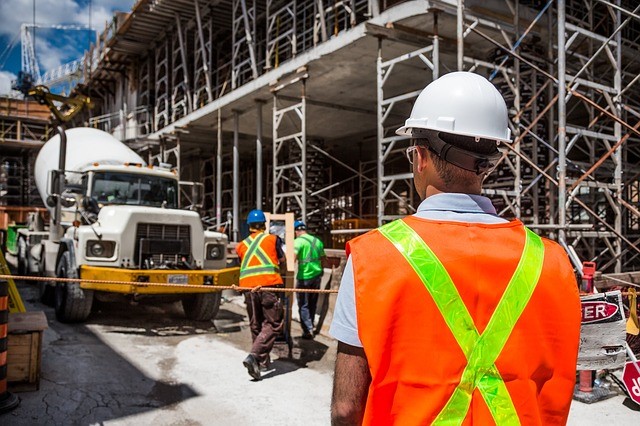As technology adoption continues to ramp up in the construction industry, one area getting a lot of attention is improving safety. A strong emphasis is on using wearables to monitor workers and their environment to make jobsite safer. Wearable tech in construction is being embedded into apparel and personal protective equipment (PPE) already common on construction sites like hard hats, gloves, safety vests and work boots.
These construction wearables are being outfitted with biometrics and environmental sensors, GPS and location trackers, Wi-Fi, voltage detectors and other sensors to monitor workers’ movements, repetitive motions, posture and slips and falls. Geofencing allows site or safety supervisors to establish restricted or hazardous areas that will alert workers with a combination of alarms and lights that they have entered an area that is off limits.
Biometrics sensors can track an individual’s heart rate, body temperature and other vital signs and immediately notify safety managers if an employee is potentially suffering from over exhaustion or becoming overheated. By proactively monitoring a worker’s vital signs, employers could possibly prevent thousands of injuries and illnesses suffered on construction sites each year.
Redpoint
Redpoint Positioning makes a real-time location system that can be deployed on a construction site. The wearable device is embedded into safety vests with alarms and lights to alert workers. The system allows you to track assets, whether that’s workers, tools, equipment or materials. You can create geo-fenced areas to alert workers when they enter hazardous or restricted areas on the site.
The tags and badges workers wear are also equipped with a call button to send an alert if they are injured, witness an accident or if they come across a hazard on the site that needs to be addressed. The system can also be integrated to work with actuators on heavy equipment that will trigger the machine to shut off or slow down when a worker wearing a tag is nearby. They can also interface with external sensors to monitor a worker’s exposure to hazardous materials.
SolePower
SolePower is still being developed, but these smart work boots are equipped with kinetic chargers that power the boots by walking. These cloud-connected boots will feature GPS or RFID location tracking, monitor falls and worker fatigue and have sensors for temperature and motion.
The kinetic chargers are a cool concept when you consider that for wearables to be truly effective, they need to stay powered on for long shifts on the construction site. Other alternatives to batteries currently being used and explored include solar, converting body heat and as weird as it seems, using lactate from sweat to create electricity to power wearables.
Caterpillar
Heavy equipment manufacturer Caterpillar is getting into the wearables game with a couple of devices. The Cat Detect for Personnel uses RFID technology embedded in a hard hat or safety vest while the heavy equipment is fitted with an antenna to read the RFID tags. If the equipment is put in reverse the operator will be alerted with audible and visual alarms if there is a worker on the ground behind them or in the detection zone.
The Cat Smartband is designed to monitor fatigue levels of equipment operators. The sleep monitor predicts when a worker’s fatigue level will create a safety risk. The Smartband has an internal 3D accelerometer to measure rest and activity cycles and is downloaded into an analytics program to predict and manage fatigue risk.
As with any connected device, the issue of security needs to be addressed when introducing wearables into you construction company. There’s also the issue of privacy, maybe not so much the “Big Brother” boss is watching my every move, but more along the lines of monitoring and collecting health and vital stats of workers. Could a worker be denied a worker’s comp claim based on data collected by company issued wearable?
Getting workers to buy in could be a challenge. Employers must prove to workers that monitoring and gathering data on their movements, vitals, etc. will improve safety and increase productivity by analyzing how they work and move about the jobsite. For example, if tracking workers’ movements you realize they are having to spend a lot of time walking back and forth across the jobsite to get tools, materials, etc. you can use that data to better lay out the jobsite to reduce those inefficiencies.
It’s also important to note that wearables are not a cure-all for companies with a poor track record with construction safety. Wearable tech should be researched and tested to ensure that it will integrate with and improve your company’s safety program and better protect your workers.
